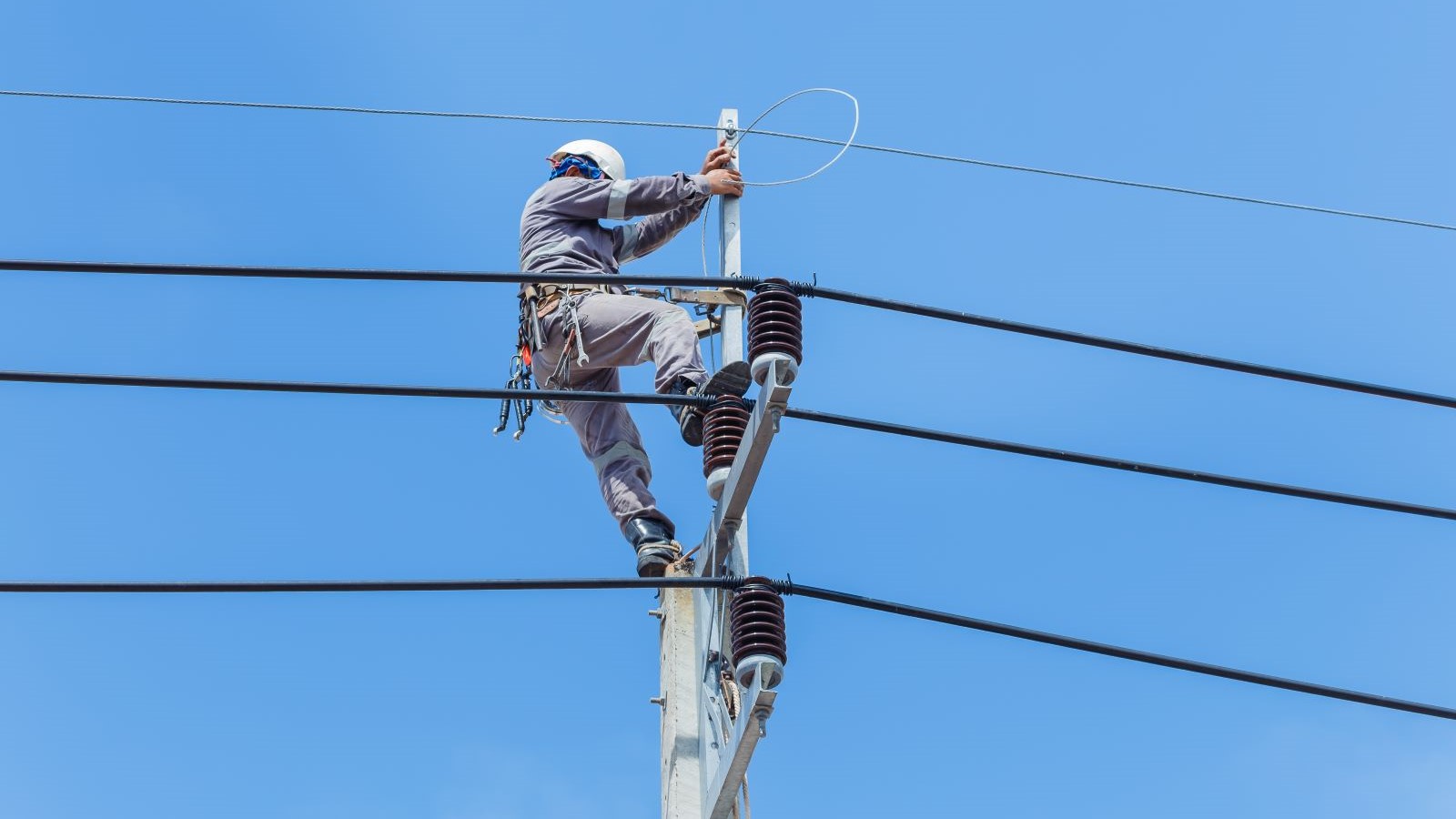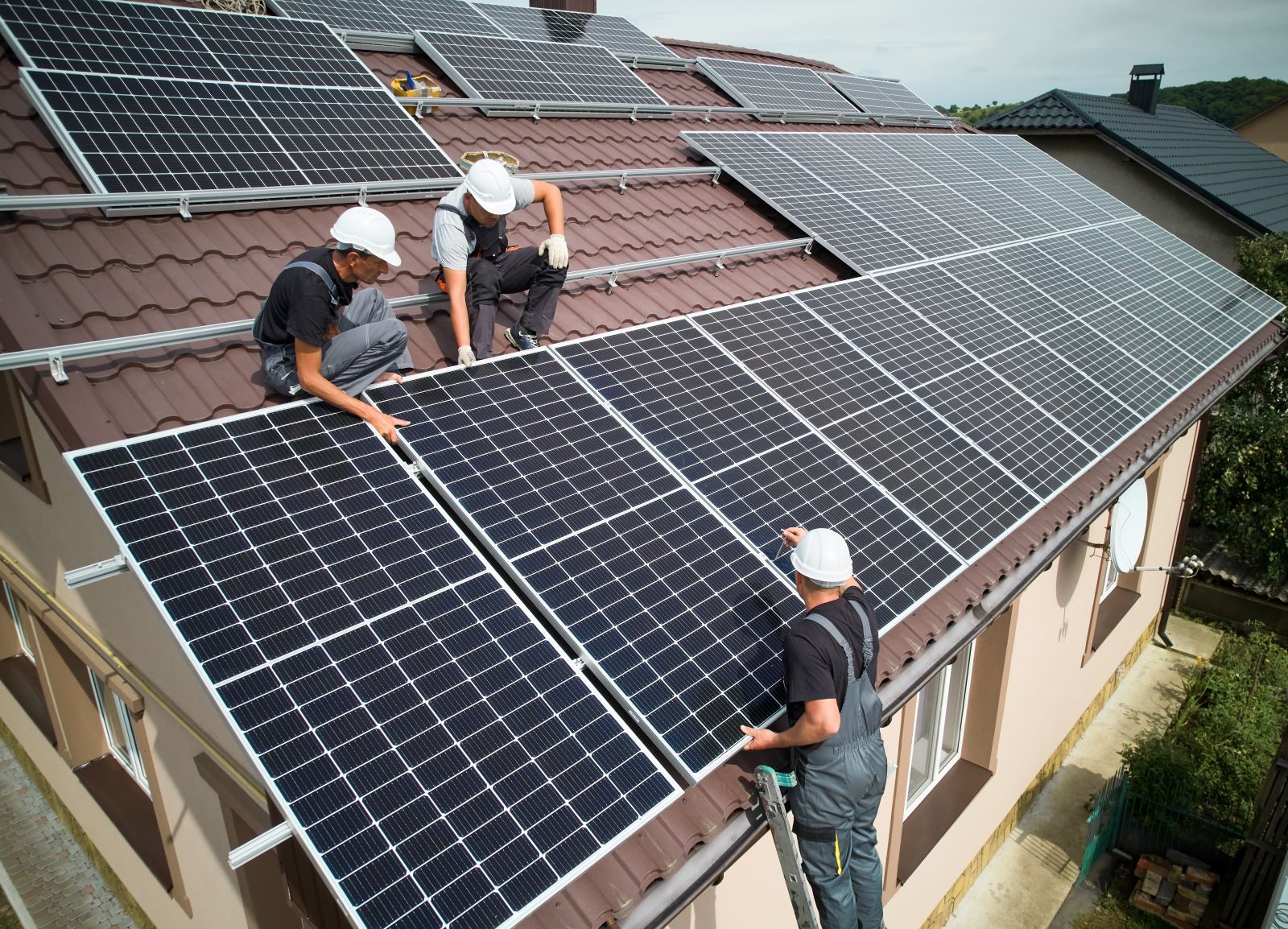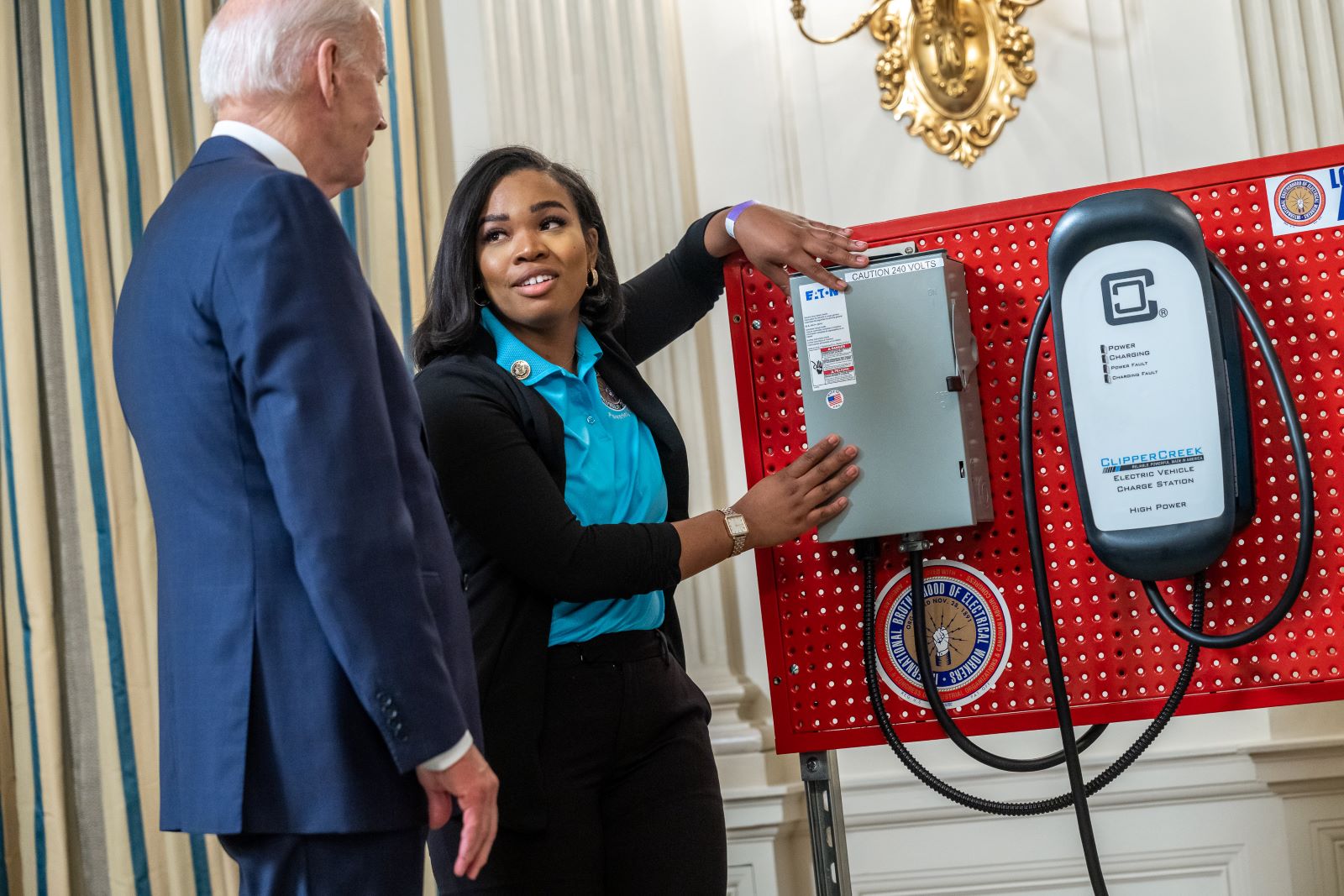The DPA was originally designed to empower the president against threats to national defense—and we are under threat now, as climate change represents the single greatest challenge of our generation. Aptly acknowledged by then-National Economic Council Director Brian Deese, “climate change cannot be addressed by market forces alone.” A successful strategy hinges upon mobilizing the private and public investments necessary to achieve our core economic and national security interests.
During World War II, we needed to rapidly produce equipment for tanks, planes, and other war supplies and required a sea change in the national industrial base to meet that urgency. Now, to address the climate crisis and hit our science-based climate targets, annual U.S. solar deployment will likely need to double every year throughout the 2020s. President Biden’s ambitious offshore wind energy target will require the installation of up to 2,000 turbines by 2030; as of 2021, U.S. waters were home to only seven turbines. Fully decarbonizing the buildings sector will mean electrifying the 49.1 million American households and millions of commercial kitchens that currently use fossil fuel equipment for cooking.
By invoking the full powers of the DPA, the U.S. can build the factories and strengthen the supply chains needed for the clean energy transition and take ownership of American clean energy independence—all while centering equity, labor rights, and justice.
Two ways the DPA could be put to work
Evergreen’s report breaks new ground by laying out 15 distinct use cases for the DPA under four broad authorities. Most of these authorities are rarely used, and none have been applied in a clean energy context. Among this exciting slew of possibilities, two applications stand out: facilitating disaster recovery and coordinating place-based clean energy investments.
1. Facilitating disaster recovery
Climate change is driving an unprecedented surge in extreme weather events and disasters that are anything but “natural.” As we face an increasingly severe, costly, and frequent number of droughts, wildfires, and hurricanes across the country, we need faster responses to support communities and must seize the opportunity to rebuild with cleaner, more efficient technology.
These climate-fueled disasters regularly damage critical infrastructure, taking power lines and other services offline indefinitely. Moreover, supply chain crunches make immediate repairs far more expensive, and often altogether impossible. After major storms, materials shortages can lead to rationing and extensive delays in repairs and reconstruction. Distribution power transformers (DPTs), for example, are essential for restoring service in the aftermath of a natural disaster—but supply chain bottlenecks have led to a four-times increase in wait times for DPTs.
In the face of these and similar challenges, the use of priority purchasing under Title I of the DPA can help resolve these kinds of supply chain crunches by expediting procurement, while allocations under the DPA would help ensure the availability of such supplies. The DPA empowers the Federal Emergency Management Administration (FEMA) and the Department of Energy (DOE) to establish priority contracts between key suppliers and utilities, contractors, and local government agencies in charge of rebuilding, so critical services can come back online as quickly as possible.






